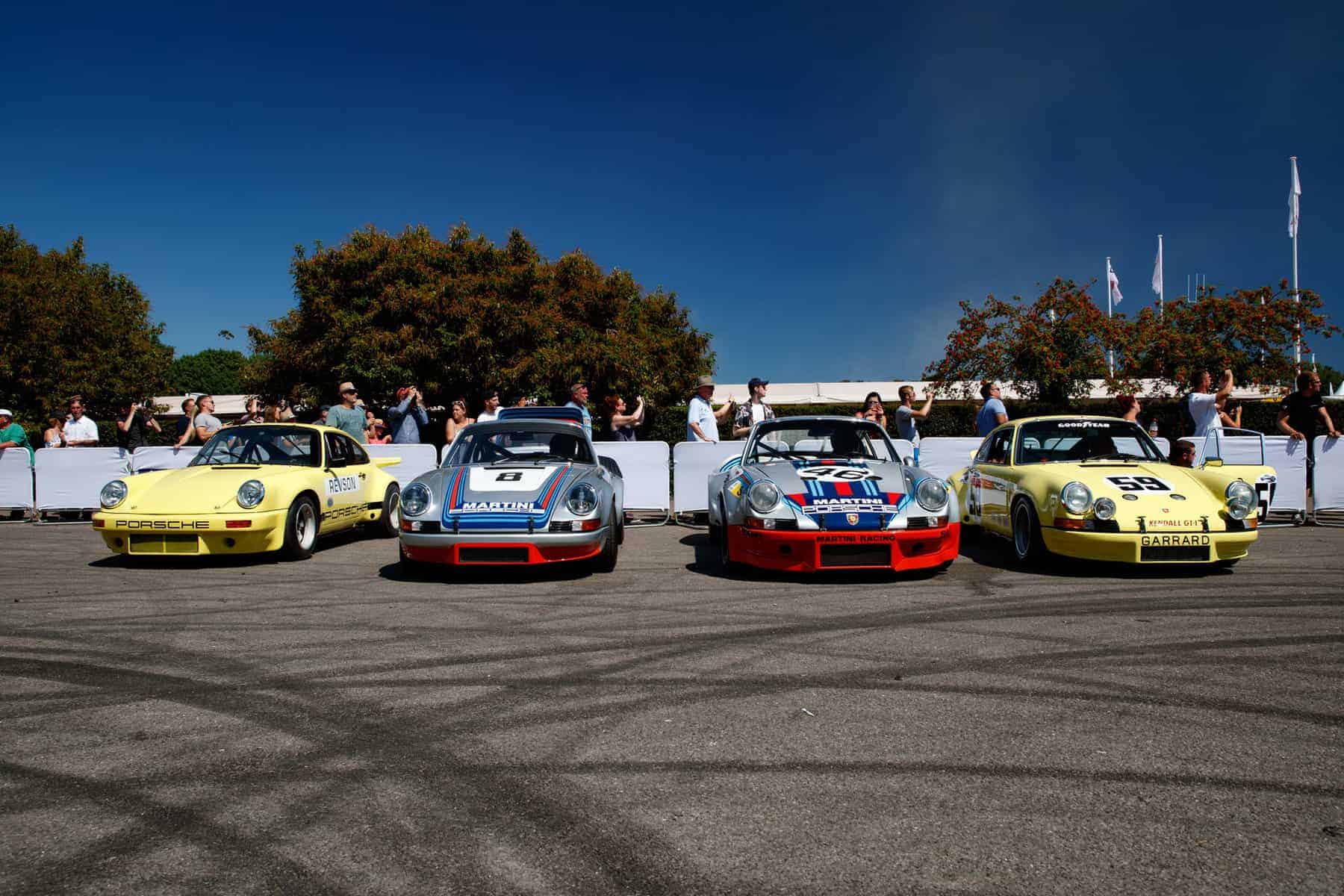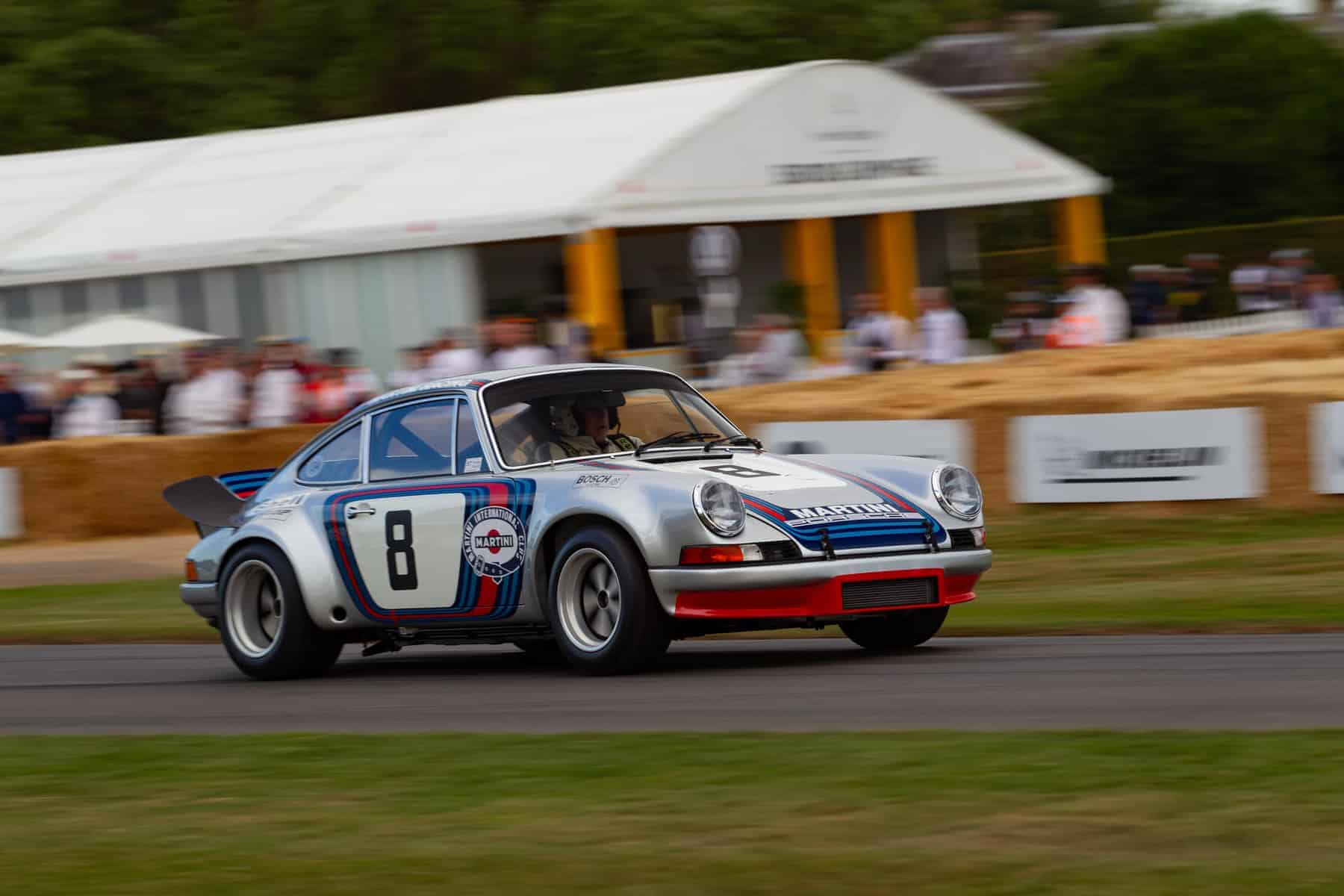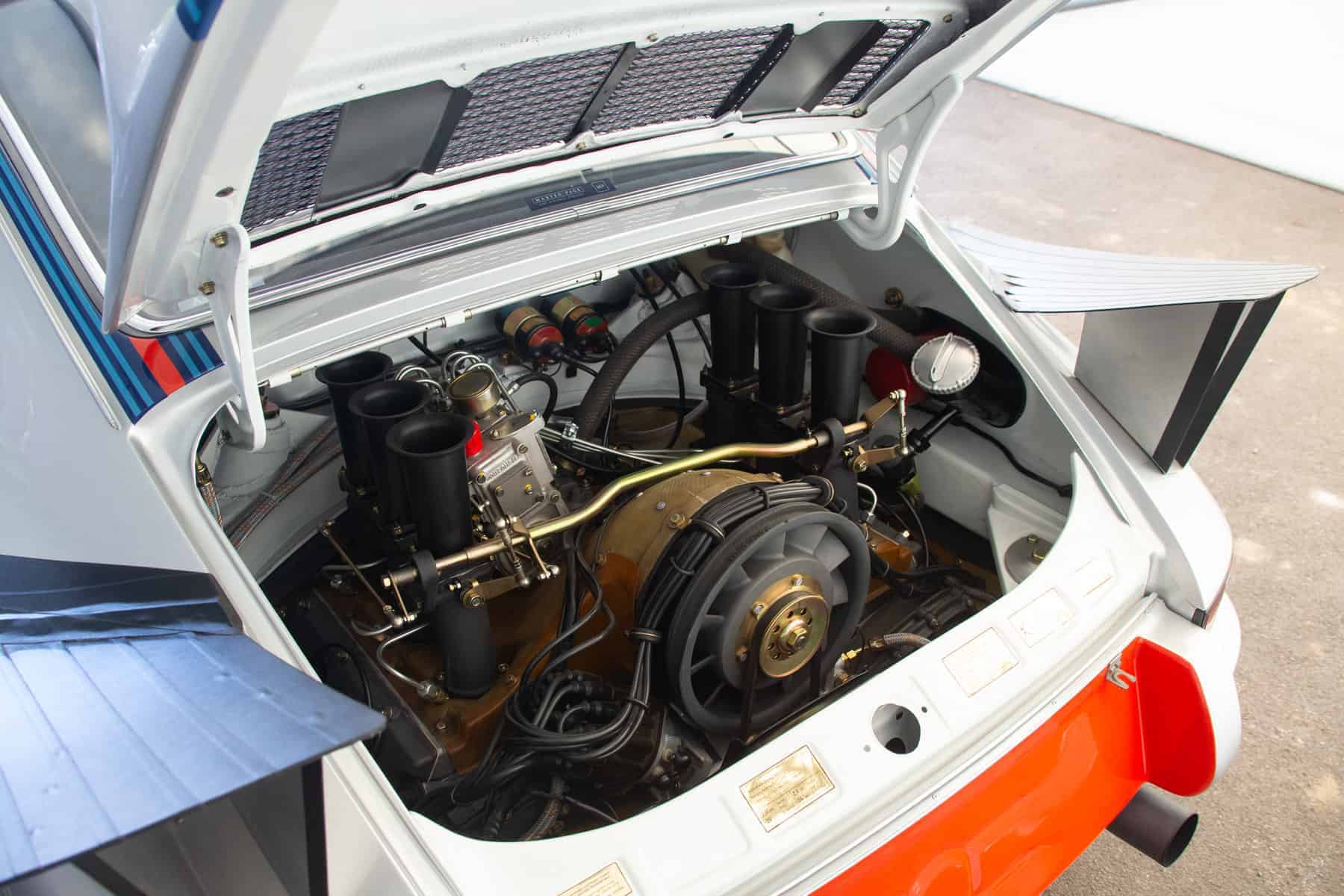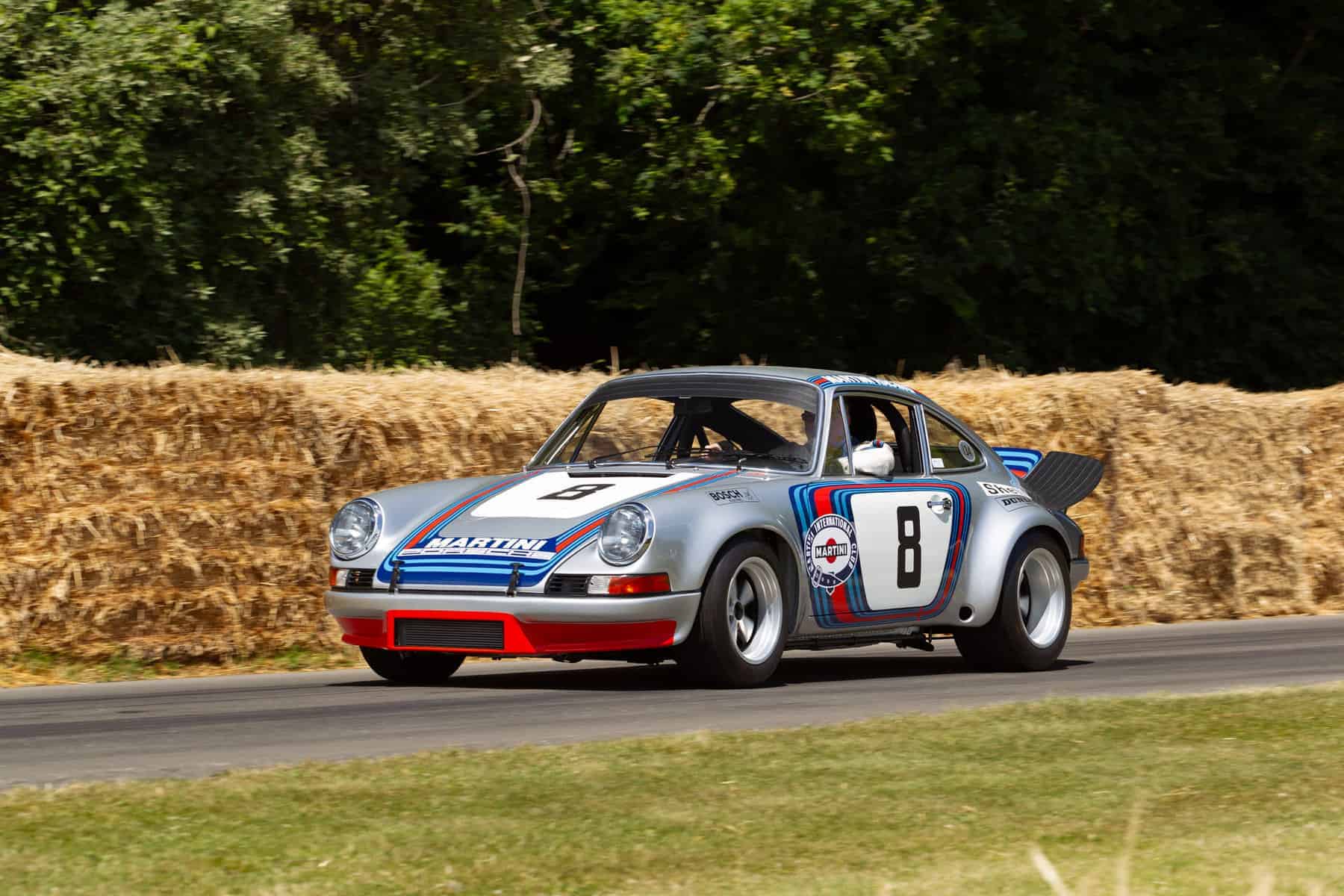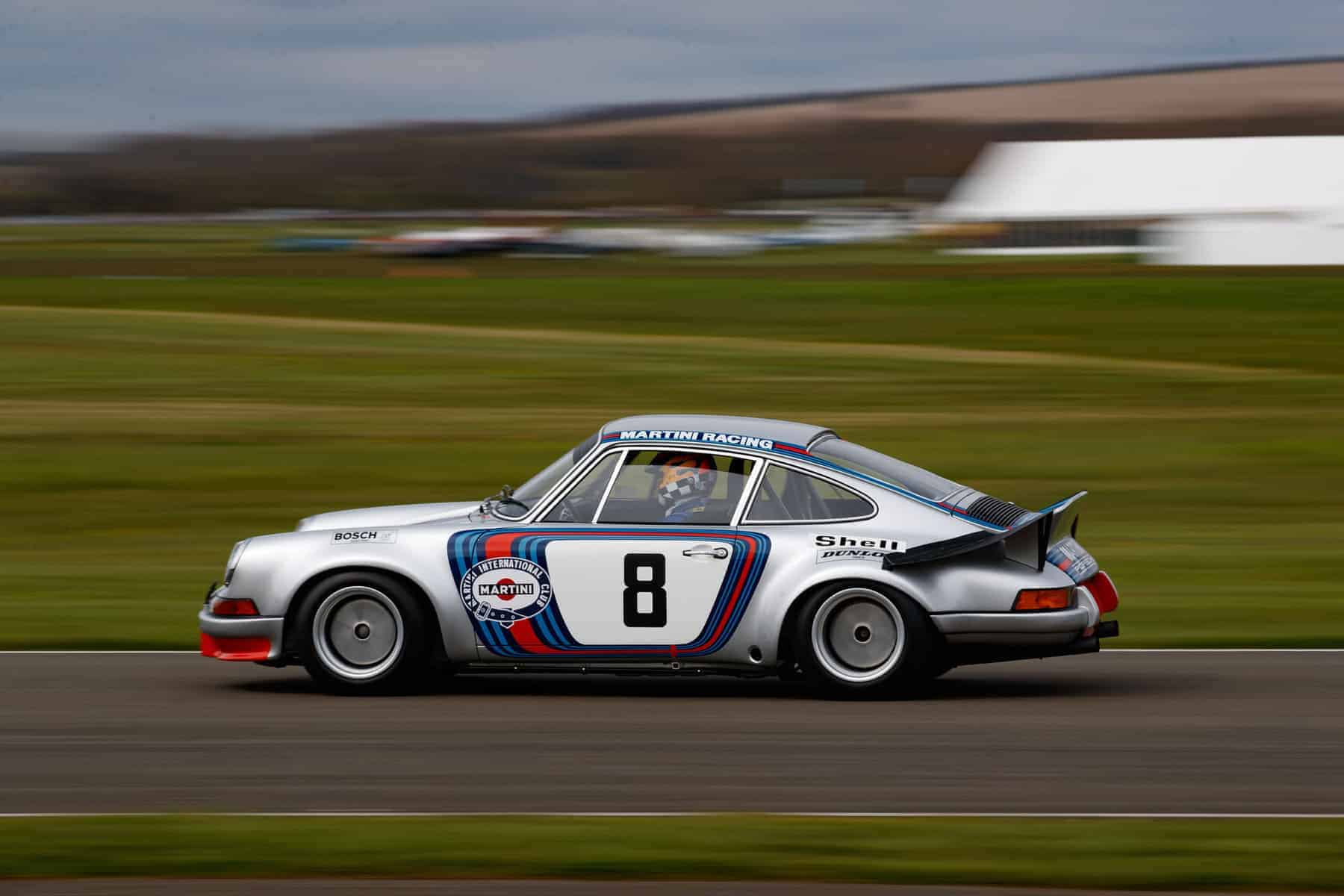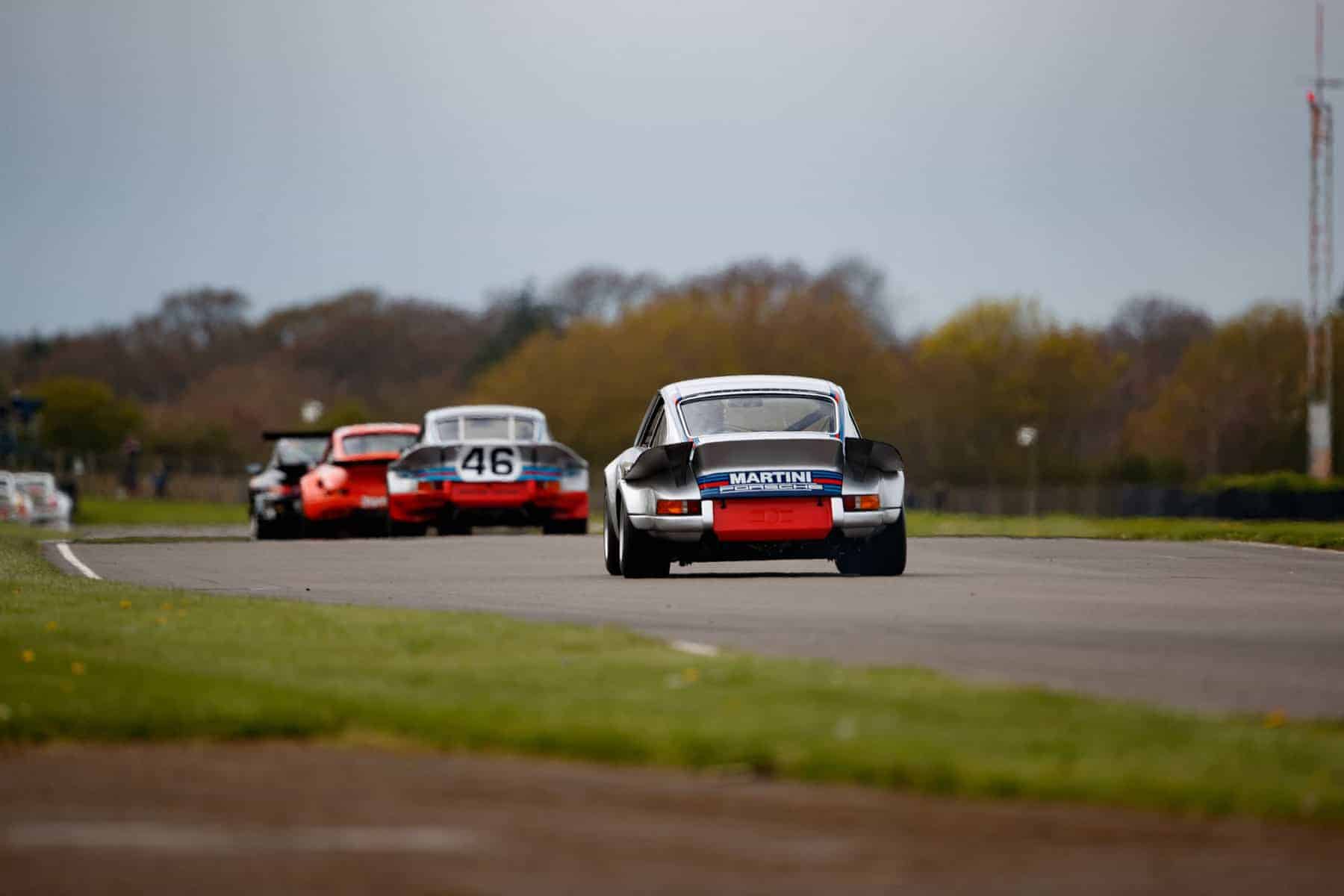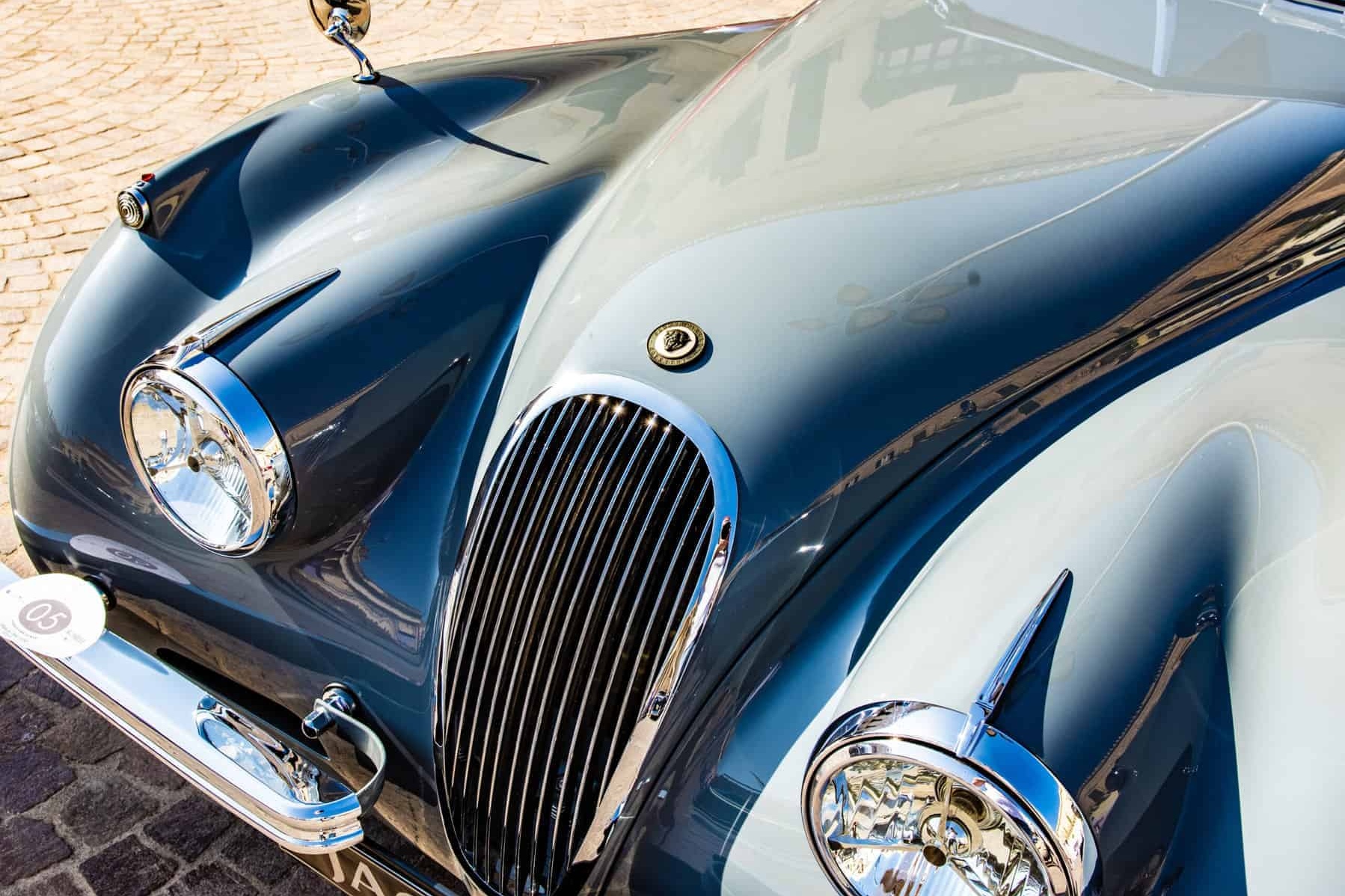
Porsche 911 Carrera RSR
The amazing story of one of the 911’s greatest wins
WORDS & IMAGES BY: WOUTER MELISSEN
Purpose-built, three-liter prototypes headed the field of the 1973 Targa Florio. These included exotic flat-engined Ferraris and Alfa Romeos but also a pair of Porsche 911 Carrera RSRs.
Based on a production road car the two factory-entered 911s should have been categorized as GTs along with the rest of the RSRs on the entry. However, the Martini liveried machines were used for development purposes and carried non homologated parts due to be fitted on the 1974 cars. Unlikely to challenge for outright or even class victory, the outing served as a very serious test session but ultimately yielded one of the 911’s greatest wins.
When Porsche introduced what would become the 911 at the 1963 Frankfurt Motor Show, there were no immediate plans for a competition version. It nevertheless did not take long before 911s were winning races and road rallies around the world. Some of these 911 racers were factory prepared but the focus of the competition department was on the quest for outright success at Le Mans with the 917. After back-to-back victories in 1970 and 1971, and an extensive rule change banning the 917 from the World Championship, a proper Porsche 911 competition finally became a priority at Weissach.
The new rules for 1972 consisted of six Groups with Group 1 covering mildly modified production-based touring cars and Group 6 for purpose-built prototypes with a three-liter displacement limit. During the previous seasons, Porsche had already produced 911 S based Group 4 cars. These were successful but the “S” offered limited room for modifications. To start with a more accomplished base model, Porsche set about developing a new production model. Dubbed the 911 Carrera RS 2.7, the new road car was introduced at the Paris Motor Show in the fall of 1972.
It was the first time the famous “Carrera” name was used for a version of the 911, signifying the importance of the new model. The reason brief while creating the Carrera RS included an increase in engine displacement, wider fenders, a lightweight construction, and a rear wing. Once 500 examples of the road car were produced, these upgrades would be fully homologated for the Group 4 competition car. Although the Carrera RS was a homologation special, Porsche had little trouble selling them and eventually over 1,500 examples were built. Today, it is one of the most iconic Porsche road cars.
The Carrera RS offered the perfect base for the Porsche Motorsport engineers to develop the Carrera RSR Group 4 car. Although due to be run by the factory team, it, crucially, would also be offered for sale to customer teams. The displacement was further enlarged to 2,808 cc by increasing the bore by 2 mm. Equipped with Bosch fuel-injection and larger valves, the Type 911/72 engine was good for just over 300 bhp. The Carrera RSR also sported nine-inch width rims at the front and eleven-inch wheels at the back. The wheels were large enough to allow for disc brakes to be fitted that were previously used for the Porsche 917 prototype. At 840 kg, the RSR was exceptionally light.
Porsche Motorsport began testing the RSR late in 1972 and while the works cars received the regular ten-digit chassis number, they were internally also referred to with an R number. The first factory cars were “R1” and “R2” and they’d already competed in the 1972 Tour de Corse rally. Both cars had retired from the event, but the lessons learned were adapted to the next batch of cars. The next two works cars were entrusted to the factory backed Penske and Brumos teams for the 1973 Daytona 24 Hours. With the Carrera RS not homologated yet, the two RSRs were forced to run in the prototype class. The Brumos-entered “R4” with Peter Gregg and Hurley Haywood survived the grueling race and scored a surprise outright victory.
On March 1, 1973, the 911 Carrera RS was officially homologated for Group 4 and with it the RSR competition version. That was just in time for the Sebring 12 Hours, which was run for GT and Touring cars. On the grid was one of the first Carrera RSR customer cars built, which was sold to American amateur racer Dave Helmick. Brumos offered to run the car for Helmick, and he shared the driving duties with Gregg and Haywood. Together they dominated the race, beating the next RSR by one lap. Finishing third, a big-block-engined Greenwood Corvette was a further six laps down. It was the start of a successful season in Group 4 for the RSR. Equally important, Porsche sold forty-nine examples to customers.
Even before the RSR was homologated, Porsche Motorsport continued the development work. In January of 1973, the German engineers were at the high-speed Paul Ricard circuit in the South of France. The goal of these tests was to further refine the aerodynamics of the 911 Carrera RS and RSR. The iconic “ducktail” rear-wing fitted to both the road and competition car was widened by adding flares to the rear fenders. The ultimate version of this full-width rear wing was nicknamed the “Mary Stuart” as it resembled the collar worn by Mary Queen of Scots. As part of the refined aerodynamics package a deeper chin spoiler was also fitted.
There were also further changes made under the skin. The engine was further enlarged by increasing the bore to 95 mm. The revised 2,994 cc engine also sported new heads with larger valves and a slide-valve injection system. The new three-liter competition engine was rated at 330 bhp. The rear suspension mounts were moved to allow shorter trailing arms to be fitted. The suspension struts were also revised to allow for a lower ride height. For the works cars experimented with lightweight but very expensive titanium springs. Wider 10.5 and 14-inch wheels were trialed.
None of these modifications were homologated, which meant that the modified works cars could not race in the Group 4 category. The outings in the World Sportscar Championship races did serve to develop the definitive three-liter RSR due to be offered to customers from 1974 onwards. To distinguish the two versions, the first iteration is now referred to as the RSR 2.8, while the 1974 cars are dubbed RSR 3.0. In addition to the upgraded cars, Porsche also fielded proper Group 4 specification RSRs. These were hugely successful with class wins at Vallelunga, Dijon and Spa Francorchamps. While customers won several other rounds, a class win at Le Mans eluded the RSR in 1973.
Porsche first raced the non-homologated RSR at the Le Mans 4 Hours on April 1. At this point, the cars still featured the conventional “duck-wing” but did sport the larger engine and wider wheels. Starting from pole position in the relatively low-profile event, Gijs van Lennep and Herbert Müller won outright. The next outing came at the Monza 1000 km, which was a World Championship race. Chassis R6 and R8 were entered and this time sported rudimentary wing extensions which were mounted on the rear fenders and were supported by two struts on each side. It was not a successful outing as both cars were forced to retire with engine issues. R6 was back out at Spa. Fitted with the 2.8-liter engine, it finished fifth overall.
Next on the calendar was the Targa Florio, which was arguably the most daunting of all World Championship events. The last of the great road races, the event was run on the public roads around the island of Sicily. Each 72 km lap had over 800 corners and by the early 1970s, the cars nevertheless reached average speeds of well over 100 km/h. It was an exceptionally dangerous event, which is poignantly documented in the 1972 documentary Speed Merchants, where Vic Elford explains: “This is the section where I usually have my practice accidents. Two years ago in a Porsche I hit an Alfa Romeo service car and then last year…hah…I hit a local!”
Porsches traditionally excelled in the Targa Florio and even used the Targa name to describe the 911 models with removable roof panels. The entry for the Targa Florio featured three 911 Carrera RSRs; R2, R6 and R8, all fitted with the wider rear wing. Porsche had also brought along one of the very first prototypes as a back-up. A chassis ending crash for R8 (#107) during qualifying meant that Günther Steckkönig and Giulio Pucci had to switch to the spare car (#107T). Herbert Müller and Gijs van Lennep shared R6 (#8), while Leo Kinnunen and Claude Haldi were in R2 (#9).
The fastest of the Ferrari 312 PBs qualified in pole position with a lap time of 33:58.500. The #8 car was the fastest of the Porsches, nearly three minutes off the pace but still lined up in fifth overall. It turned out to be a very eventful and tragic race with several big accidents. A driver and a spectator were killed in separate incidents and a further seven spectators were injured. One of the few leading cars to stay out of trouble was RSR R6 of Müller and Van Lennep. After the faster cars were forced to retire, they emerged in the lead to claim a surprise victory. The other two RSRs also survived and finished third and sixth overall.
After the particularly tragic edition, the Targa Florio was no longer on the World Sportscar Championship calendar from 1974 onwards. This made the win for Müller and Van Lennep in R6 a very historic one. The Targa Florio-winning car, officially tagged 911 360 0588, continued to be raced and modified with experimental aerodynamic devices. It raced at Le Mans with a full width rear wing and then appeared at Zeltweg and finally competed at Watkins Glen with Roger Penske. At each outing, the car had a distinctly different rear wing. At the end of the year, it was sold to Hector Rebaque. Chassis R6 was eventually restored to its Le Mans configuration but Targa Florio colors while in American ownership.
During the early 2010s, it was sold to a London-based Brazilian collector who fully appreciated the car for what it was. He entrusted the R6 to specialist Maxted-Page for a sensitive restoration to the exact configuration it was driven to victory in the 1973 Targa Florio. This included the addition of the rudimentary rear wing extensions complete with period correct duct tape. Chassis R6 has since been demonstrated at the Goodwood Festival of Speed and Members’ Meeting.
With the Carrera RS and RSR, Porsche laid the foundation for generations of Porsche 911 competition cars, which are used with great success almost every weekend on racing tracks around the world. Perhaps the most iconic of all these early Porsche 911 Carrera RSR racers is R6, the winner of the last Targa Florio run as a World Championship event.
